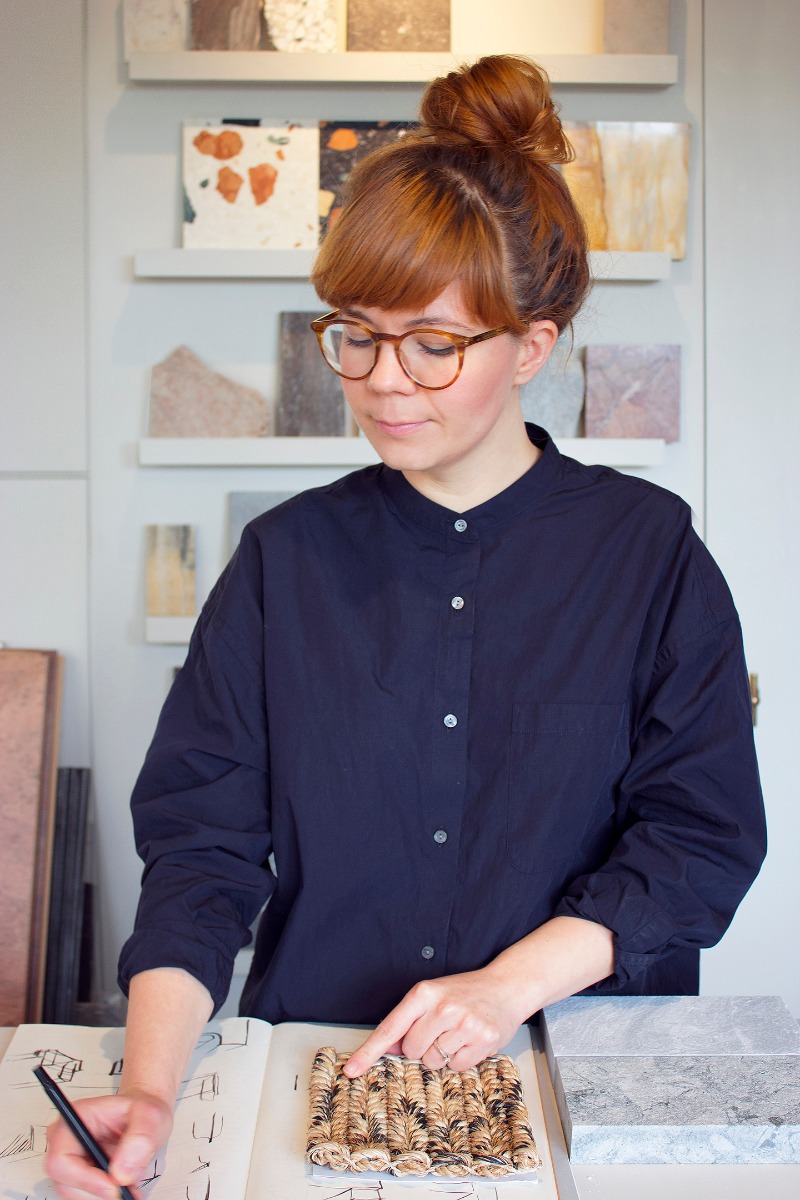
Producing less is the core
A conversation with Latvian-born, Rotterdam-based designer and researcher Tamara Orjola
Tamara Orjola is a Latvian-born designer and design researcher who currently lives in Rotterdam. In 2016 she graduated with honours from the Man And Well-Being Department of Design Academy Eindhoven, and in the same year, her project Forest Wool won the top prize at Dutch Design Week. Forest Wool included a series of stools and carpets made from a material that Tamara herself devised – pine needle ‘wool’. As we know, pine is one of the most widely used materials in the woodworking industry, but wood is only a part of the tree – 20-30 percent of a pine tree is made up of needles, which are usually left unused. As a result of research and experiments, Tamara Orjola has concluded that using standard manufacturing techniques (chopping, soaking, drying, binding, pressing, etc.), pine needles can be converted into textiles, composite materials and paper that can serve as great alternatives to various conventional fibers. ‘I find the “Nose to tail” principle very important; it takes quite a few years for a tree to grow, therefore it is important to treat every particle of it with respect,’ says Orjola.
Forest Wool received extensive international media attention. At a time when the design world is being forced to reconsider its values, Arterritory.com was interested in finding out how this project has developed since its premier.
How did you come up with the idea to use pine needles as a design material?
It all began with research about the forgotten value of plants and techniques. There is a lot of knowledge and awareness we used to pass from generation to generation, but it became forgotten due to the development of mass-production. Valuable local material and techniques are left behind due to the unwillingness of mass-production to adopt far more sustainable but less sufficient sources of production.
You will be surprised, but the pine tree is the most common tree in Euro-Asia. I grew up in Jūrmala, an area rich with pine forests. I knew that the pine tree has much more to offer, and that in the old days it used to be used as food, remedies, to build homes, furniture, and other purposes. The Latvian national stone, amber, comes from the resin of the pine tree. Nowadays it is only valuable for its timber. I was prompted to experiment with needles after researching the hundreds of millions of pine trees cut down in the EU.
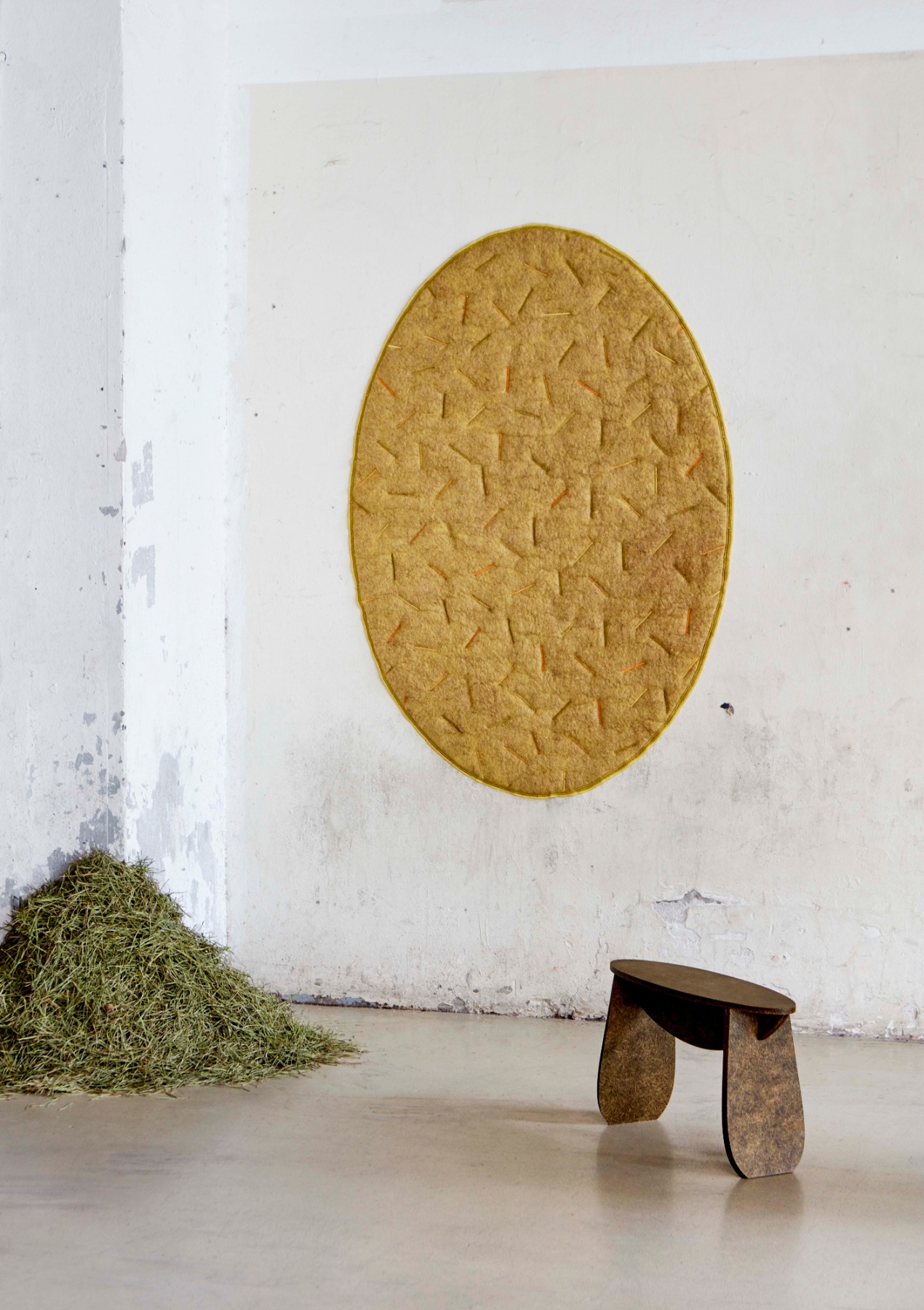
How would you describe pine needles as a material – how suitable or pliable is it for executing various creative design ideas? To what degree is it functional and sustainable?
It is a short fibre, slightly coarse but at the same time much softer than coir. I am also hoping that I can achieve much softer results once the industrial processing technique is finalized. At this moment I am focusing on the extraction technique and the unique properties of the fibre to define the best industrial application for it. But my major interest lies within the textile and biocomposite industries. Natural fibre-reinforced composites are a cheaper and more sustainable alternative for glass and carbon fibre composites.
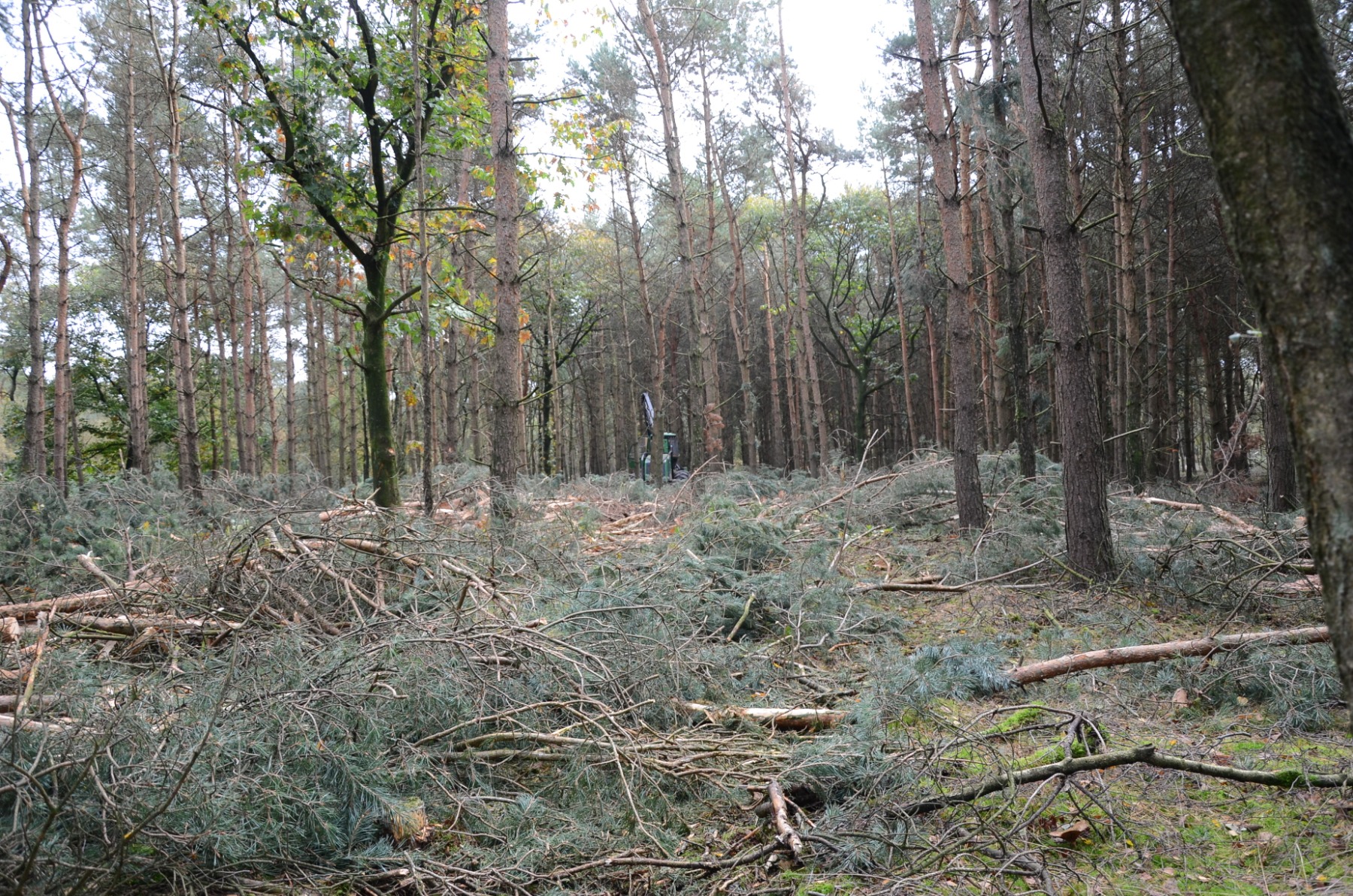
Where do the pine needles you use in your design projects come from? How are they collected?
At this moment most of the needles I have used in my design were harvested locally in the Netherlands, but as the Dutch timber industry is very small (most of the timber is imported to the country from abroad), my goals would be to work with other European countries including Latvia. Once the production technique is established, it is important that it could be easily replicated by bringing small processing factories into different locations/countries rich with pine forests, i.e. bringing production as close as possible to the raw material waste streams. This would provide additional and sustainable income to local forest owners and government-run forestries.
At this moment we are also in search of a supply partner to supply needles for a feasibility study and research & development, to begin with. This could be the beginning of a joint venture.

In 2016 your project Forest Wool won the top prize at Dutch Design Week – what kind of support have you received from the design industry since then in terms of manufacturing these products?
To be honest, I received a job offer immediately after graduating, which I thought would be a great opportunity to gain experience. But this of course meant that I had to put my work on hold. While living and working in London, I have been also approached by many multinationals, but after travelling, talking, and exhibiting, I have realized that passing my idea to a big company and becoming a consultant on this project simply won't work. That’s because the scale of the companies would quickly kill the initial aspect of sustainability. This led to my goal of setting up a start-up. Since last summer I have moved back to The Netherlands to try and set-up the start-up. I must admit that bringing new material to the market is no easy task and requires a lot of investment and expertise. You don't learn this in design school.
At this moment we are waiting for the funds to start a feasibility study. Hopefully this will bring Forest Wool to the next level and help determine the next steps.
This may be a great opportunity to mention that we are interested in collaborating with experts within the fibre, textile, and biorefinery industries. If it sounds interesting, please do get in touch.

What is your vision of how the pandemic could influence design and the values that it embodies? – From the point of view of both a designer and an end-user.
The present COVID-19 pandemic situation has shaken our global and complex supply chains. We suddenly realize how much we depend on commodities coming from overseas. Resource nationalism is on the rise and today's crisis is an opportunity for us to reflect on the global supply chain and make drastic changes that will benefit our environment. Producing less, utilizing the available nature in the least harmful way, and stopping the exploitation of less economically developed countries that face dramatic environmental degradation.
I also see this as an opportunity for drastic change in both industrial and consumer behaviour!
Resource nationalism is on the rise and today's crisis is an opportunity for us to reflect on the global supply chain and make drastic changes that will benefit our environment.
How important are the notions of ‘local’ and ‘environmentally based’ in the future development of design?
Materials play an important role in my design; as a designer living during the rise of consumerism, a growing population, and climate change, I find it very important to understand the whole cycle of the material. I need to know that anything I create is going to benefit our environment, or at least not harm it.
The term ‘local’ is very important within the whole concept of Forest Wool. Taking in mind that most fibres (except for flax and hemp) are imported from overseas, pine needle fibre is a locally available and seasonal fibre that is also a by-product of the timber industry. It also doesn’t require pesticides, water, or additional maintenance labour.
I find the ‘nose to tail’ principle very important; it takes quite some years for a tree to grow, therefore it is important to treat every particle of it with respect.
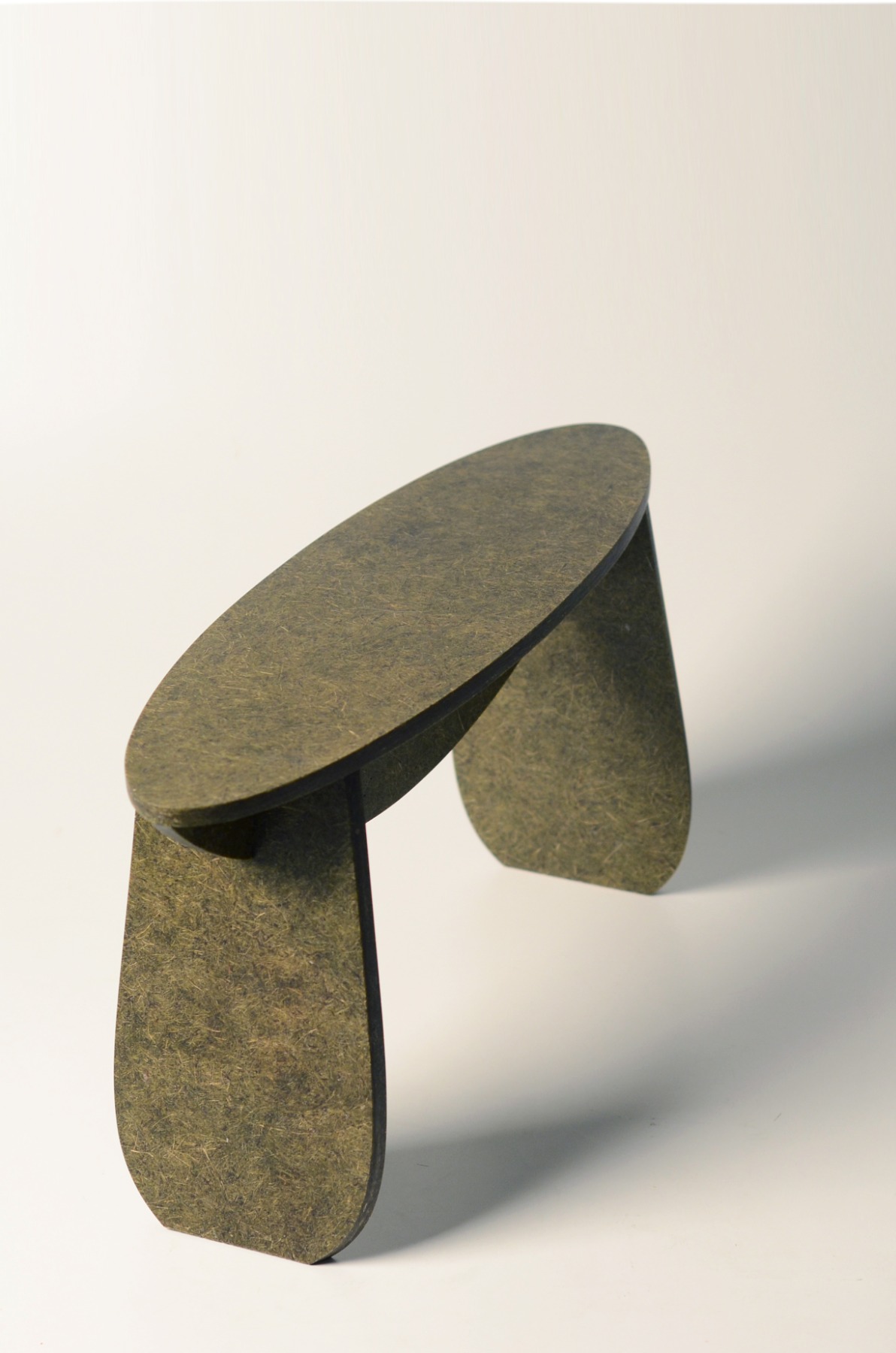
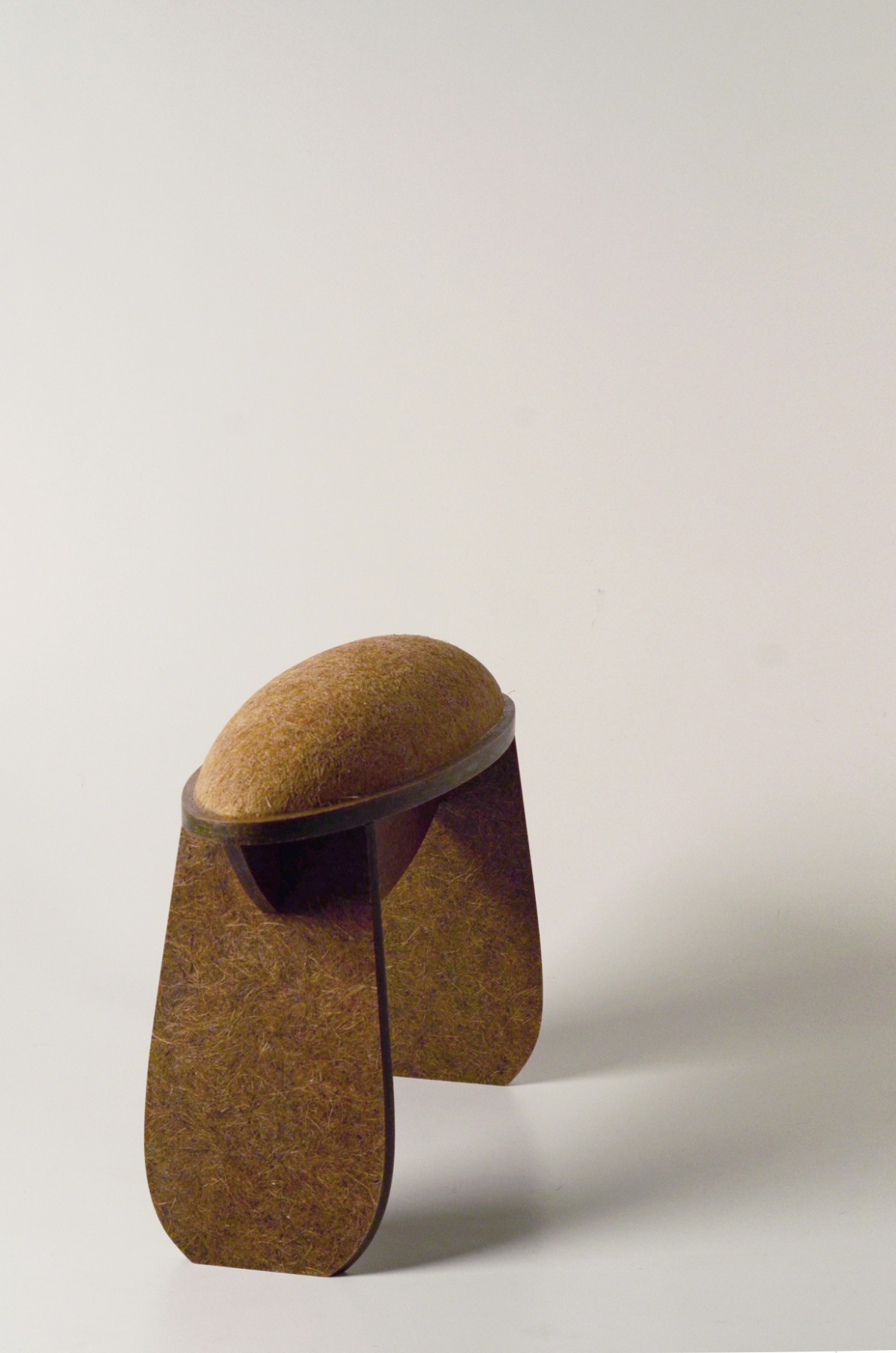
Revisiting ancient wisdoms and adapting them for use in today’s society is becoming increasingly popular around the globe. How relevant do you think this trend will become in design, a field which, unfortunately, still heavily relies on mass production?
I think we can learn a lot from local crafts. Crafts feature natural, pre-industrial materials, most of which are within a closed loop of the ecosystem. In the past, things were made taking in mind the local environment to satisfy local human needs. Unfortunately, this attitude and knowledge were left behind because of the development of mass production. Globalization did bring us general prosperity but at great costs to our ecosystem.
I don't believe that we all should go back to ancient times, but we definitely can learn a lot from the indigenous way of living.
A growing number of design companies have been turning to the use of so-called ‘agricultural waste’ in their production. How do you see this trend developing?
I think that, fundamentally, we have to eliminate traditional linear systems in favour of circular models – eliminating waste, utilizing production side-streams as resources, providing services rather than goods.
I also believe that we shouldn’t just design materials from everything that is around; we need to fundamentally reevaluate production and consumption. Optimizing production and producing less is the core.
Globalization did bring us general prosperity but at great costs to our ecosystem.
You’ve created a series of tableware for seniors with osteoarthritis. Did it reach its target audience? How relevant is socially oriented design right now? Are projects like this still just an exception in the overall design scene?
That's an old work of mine; it was a study project while I was studying at Design Academy Eindhoven.
I worked with very different subjects – like gender, aging, the therapeutic qualities of smell, and well-being – and with diverse materials. The social design discipline is critical; it empowers the designer to improve the quality of life of many. I think many things in our lives could have been designed taking inclusivity in mind – as part of general design thinking and not as a separate practice. Particularly for that project, it was interesting to find out that people suffering from osteoarthritis are not keen on using products specials designed for that because they are unappealing and project the stigma of incapability/disability.
Socially oriented design is definitely one of my favourites; I don’t particularly think of products but rather problem finding and solving on very different levels. I am a researcher and I enjoy the process of discovery. I believe that the process itself is as important as the final product. A good process leads to a great result.
The most important thing is being part of the environmental chain; taking and giving.
In this complex world that we now live in, what do you think is the designer’s main task?
Everyone knows that we live in a culture of consumerism, and this is a major problem right now. I believe that by being a designer, you have the power to educate, communicate, and engage with people to create drastic changes within our unhealthy habits.
Besides that, producing less and making things that last is key. Making processes and supply chains shorter and more transparent.

What can people learn from pine trees?
I think we can learn so much from plants. The most important thing is being part of the environmental chain; taking and giving. Nature adapts to its environment; humans change the environment to benefit their needs.
The pine tree has so much heritage and culture: it helped us to survive during harsh times by providing fuel for the fire, shelter from the wind and snow, building material for our houses, and a nutritious diet. Passing on this knowledge/heritage is important for people to regain those lost links with the environment and to learn how to respect nature.